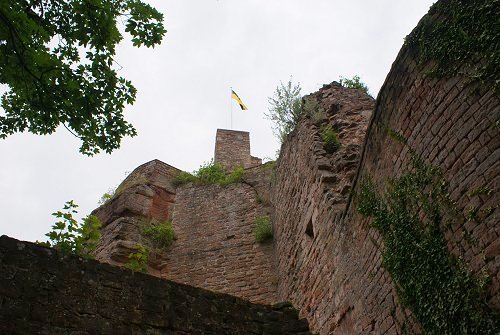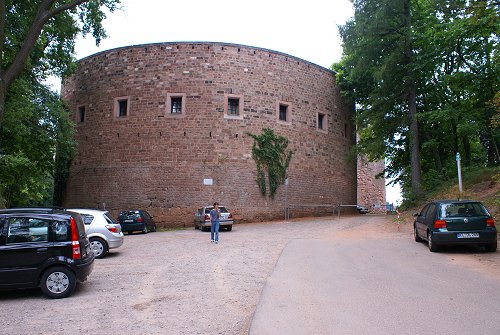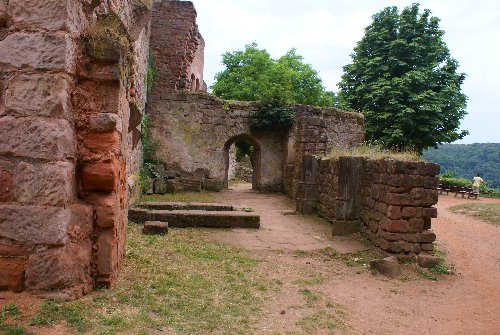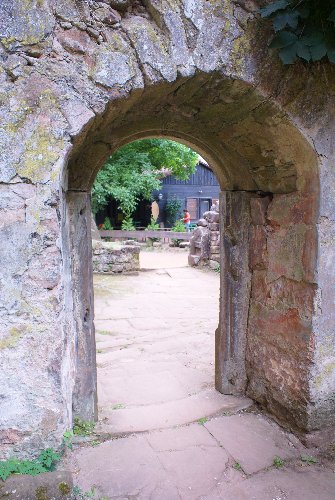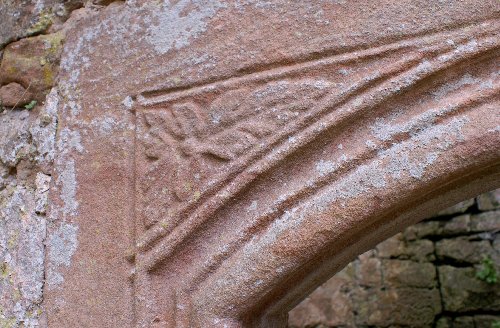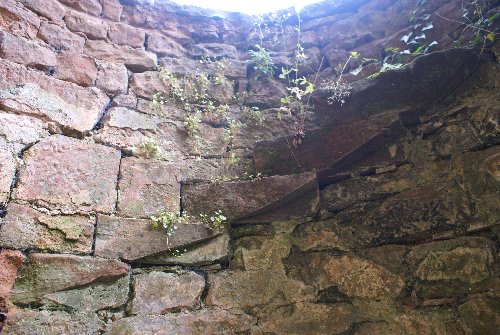Nanstein was a surprise for us. We had no intention to visit the site, having not researched it out and therefore not having had my interest piqued. But as we had a little extra time we decided to go.... twice! The first visit had us show up just as the site was closing. So, we returned two days later, and it was worth it.
These photos were taken in 2008.
Below, the Cannon Tower. Right, a view looking up to the main castle.
Nanstein was started around 1162 at the behest of Holy Roman Emperor Friedrich Barbarossa as a bulwark to help defend the Palatinate.
The castle gradually passed to Franz von Sickingen, coming fully into his possession in 1518 with his father's death. He embarked on a reconstruction program to make the castle more defensible against cannon.
In 1523, the castle fell during what became known as the Knight's Revolt ("Reichsritterkrieg"). This movement was largely led by Sickingen who had accepted the Protestant creed and helped protect Protestant leaders from Catholic persecution. Moreover, it represented an effort by local nobles to resist the growing power of the crown. During the siege, Sickingen was mortally wounded on 7 May. He surrendered the castle just before he died, which was sacked and burned. In many ways, the Knight's Revolt helped spark the Peasant's Revolt of 1525.
Sickingen's sons regained the property as a fief in 1542 and began to rebuild the fortress, completed around 1595.
Taken over by Lortheringian troops, these were defeated during a siege by troops of the Elector Palatinate Karl I, Ludwig in 1668. The Elector ordered the castle to be blown up.
Left, an example of how the castle was built into the rock.
Below left, a view of the entrance that one takes to get into the inner ward of the castle.
Above, an example of some of the authentic architecture one can find in the castle. Note the detail in the carving.
Left, an archway near the entrance. The Gastatte is beyond.
Left, more detailed carvings, this over one of the doorways leading into a watch tower.
Within this watch tower can be seen the remains of the steps that wound their way to the top.
